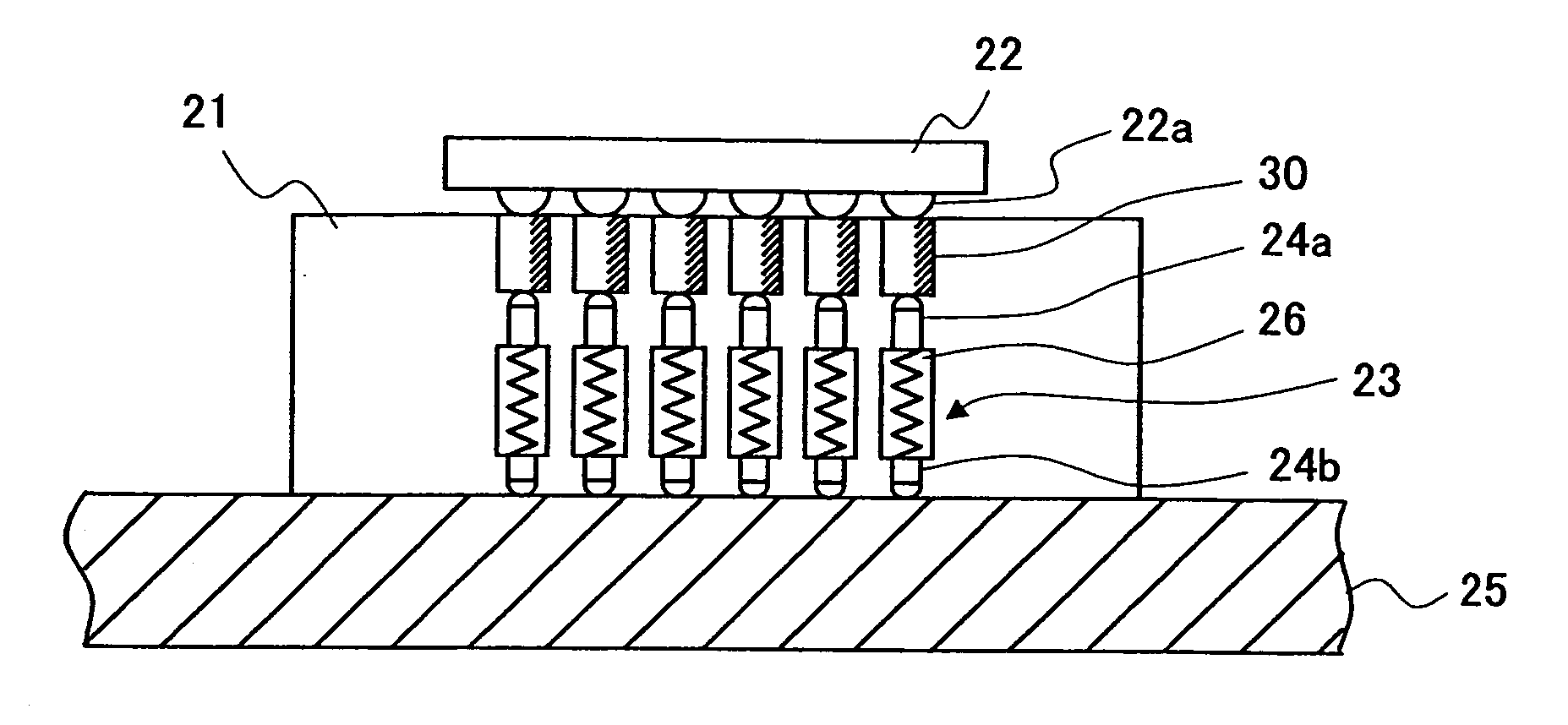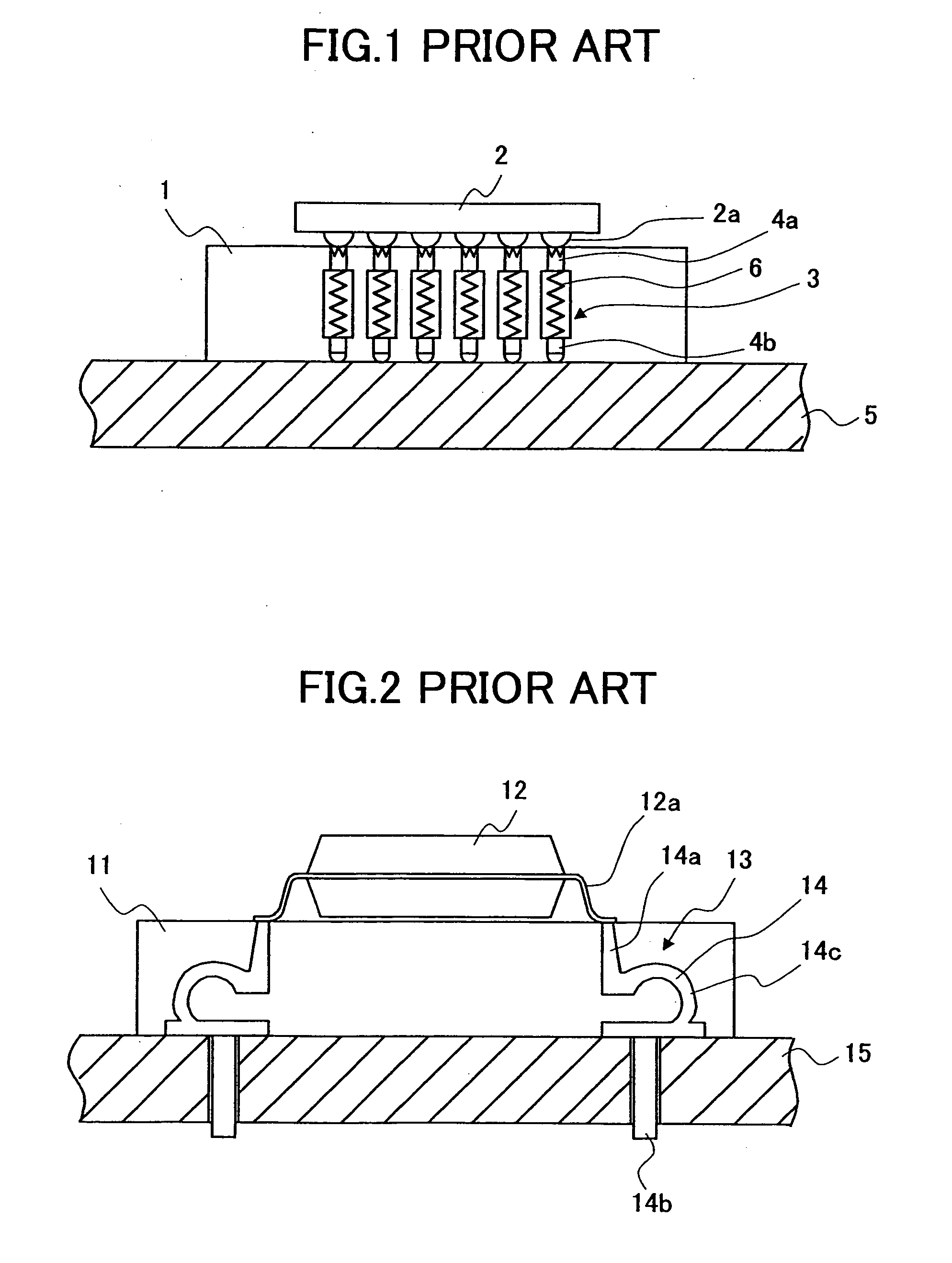Contactor for electronic components and test method using the same
a technology of electronic components and contactors, which is applied in the direction of individual semiconductor device testing, coupling device connection, instruments, etc., can solve the problems of inability to perform parallel pushing, inability to obtain contact stability, and complicated contact pins provided in the contactors, etc., to achieve easy replacement of contact electrodes and ease of replacemen
- Summary
- Abstract
- Description
- Claims
- Application Information
AI Technical Summary
Benefits of technology
Problems solved by technology
Method used
Image
Examples
third embodiment
[0096]Further, as in the above-described third embodiment, when foreign material is attached to the contact part of the contact electrode 30, the foreign material can be easily removed after detaching the contact electrode holding part 72. At this point, the detached contact electrode holding part 72 may be returned to where it was immediately after the foreign material is removed therefrom by cleaning. Alternatively, the detached contact electrode holding part 72 may be replaced with another clean contact electrode holding part 72. As a result, it is possible to remove the foreign material from the detached contact electrode holding part 72 in a separate process while continuing a test. Accordingly, the test process can be continued without being affected by the attachment of the foreign material.
[0097]Next, a description is given, with reference to FIG. 13, of a variation of the fourth embodiment. FIG. 13 is a sectional view of a contactor 81 according to the variation of the four...
seventh embodiment
[0126]The configuration of this embodiment is equal in the other aspects to that of the seventh embodiment and a description thereof is omitted.
[0127]In the above-described embodiments, as a contact electrode material, a metal material such as steel (an SK steel) or copper alloy as a conductive material is preferably used. Surface treatment may be applied on the contact part of the contact electrode. For instance, the contact part of the contact electrode may be plated with a platinum metal such as rhodium or palladium, to which solder is less likely to be transferred, or an alloy of such platinum metals. Further, the contact part of the contact electrode may be plated with metal having high hardness so as to prevent wear of the contact part. Further, in the case of alloy materials composed of sliver, platinum, copper, gold, and palladium, no surface plating is necessary. Even if the surface of the contact part is further polished, the surface is prevented from being oxidized, so th...
PUM
 Login to View More
Login to View More Abstract
Description
Claims
Application Information
 Login to View More
Login to View More - R&D
- Intellectual Property
- Life Sciences
- Materials
- Tech Scout
- Unparalleled Data Quality
- Higher Quality Content
- 60% Fewer Hallucinations
Browse by: Latest US Patents, China's latest patents, Technical Efficacy Thesaurus, Application Domain, Technology Topic, Popular Technical Reports.
© 2025 PatSnap. All rights reserved.Legal|Privacy policy|Modern Slavery Act Transparency Statement|Sitemap|About US| Contact US: help@patsnap.com



